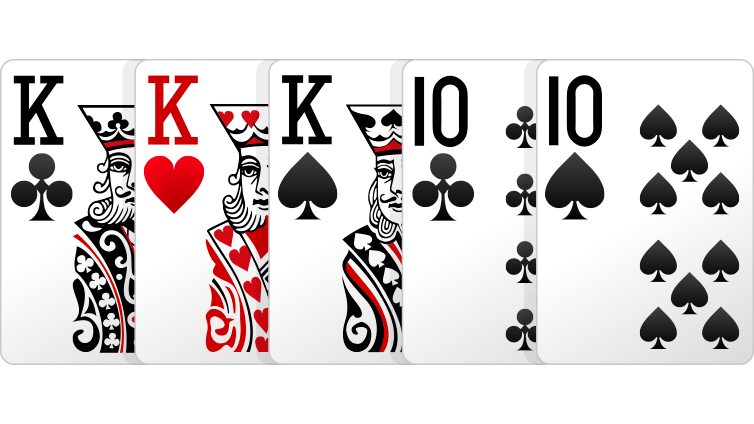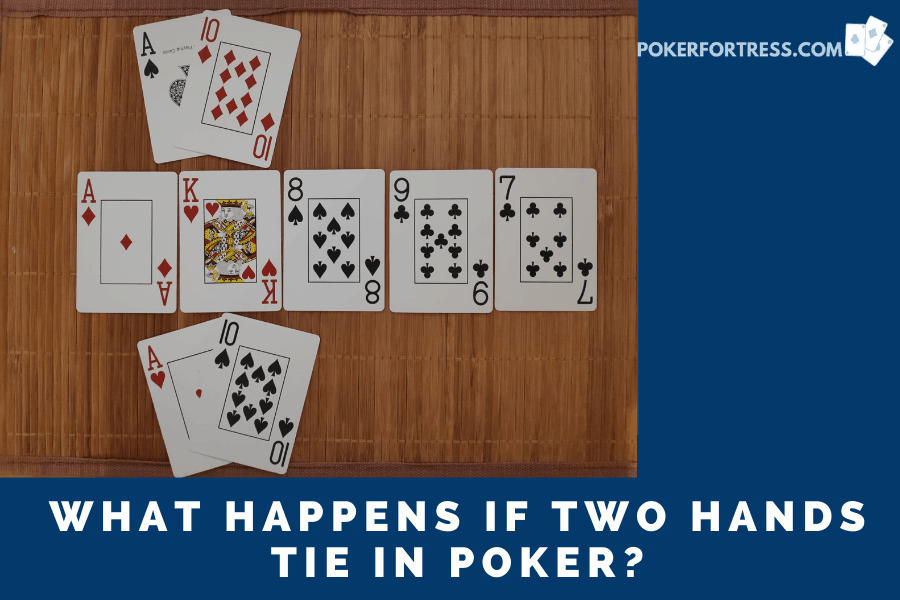All the suits in poker are of equal value. It makes no difference whether someone has the ace of clubs or the ace of diamonds. If remaining players have exactly the same hand at showdown, only in different suits, the pot is split.
The above rules are provided by 'Robert's Rules of Poker' which is authored by Robert Ciaffone, better known in the poker world as Bob Ciaffone, a leading authority on cardroom rules. He has done extensive work on rules for the Las Vegas Hilton, The Mirage, and Hollywood Park Casino, and assisted many other cardrooms.
- When a player goes all-in with more than half the bet, play continues as if they have placed a full bet, with full raises required from subsequent players. Players may only wager the smallest chip size that is used in the antes, blinds, or other pre-game collection, unless otherwise stated by the house rules that govern house revenue.
- Should you start with a hand such as J-10 there are myriad ways to make a full house. You can see a dream flop of J-J-10 or 10-10-J, or the board could run out so that one of your hole cards is not needed, e.g. On a board of 7-7-7-J-2.
Hand Ranking
The value of poker hands is determined by how rare or common it is to be dealt them, with the most common hands valued lower than the rarer hands. The complete list of poker hands is as follows, in increasing order of scarcity:
- High card
- One pair
- Two pair
- Three of a kind (sometimes called “trips” or “a set”)
- Straight
- Flush
- Full house
- Four of a kind (sometimes called “quads”)
- Straight flush
High Card
If you have no pair, three of a kind, straight, flush, full house, etc., then the highest card in your hand is considered to be decisive. The hand above, in which the best card is a king and there is no other combination of poker hand, is known as “king high”.
Ace high beats king high. King high beats queen high, and so on.
If the high cards in two players’ hands is the same, the second-highest card becomes decisive. If these cards are also the same, the third-highest card plays and so on. These cards are known as the kicker.
High card ace, king kicker:
Player 1 has A♠K♣
Player 2 has A♦Q♦
The board is 9♠6♥4♥3♠2♣
Both players have an ace, but Player 1 wins, because he has a king as his second highest card (kicker). His opponent only has a queen.

All the suits in poker are of equal value. It makes no difference whether someone has the ace of clubs or the ace of diamonds. If remaining players have exactly the same hand at showdown, only in different suits, the pot is split.
Hand Ranking
The value of poker hands is determined by how rare or common it is to be dealt them, with the most common hands valued lower than the rarer hands. The complete list of poker hands is as follows, in increasing order of scarcity:
- High card
- One pair
- Two pair
- Three of a kind (sometimes called “trips” or “a set”)
- Straight
- Flush
- Full house
- Four of a kind (sometimes called “quads”)
- Straight flush
High Card
If you have no pair, three of a kind, straight, flush, full house, etc., then the highest card in your hand is considered to be decisive. The hand above, in which the best card is a king and there is no other combination of poker hand, is known as “king high”.

Ace high beats king high. King high beats queen high, and so on.
If the high cards in two players’ hands is the same, the second-highest card becomes decisive. If these cards are also the same, the third-highest card plays and so on. These cards are known as the kicker.

Poker Rules Full House Tie Rods
High card ace, king kicker:
Player 1 has A♠K♣
Player 2 has A♦Q♦
The board is 9♠6♥4♥3♠2♣
Poker Rules Full House Tie Ideas
Both players have an ace, but Player 1 wins, because he has a king as his second highest card (kicker). His opponent only has a queen.